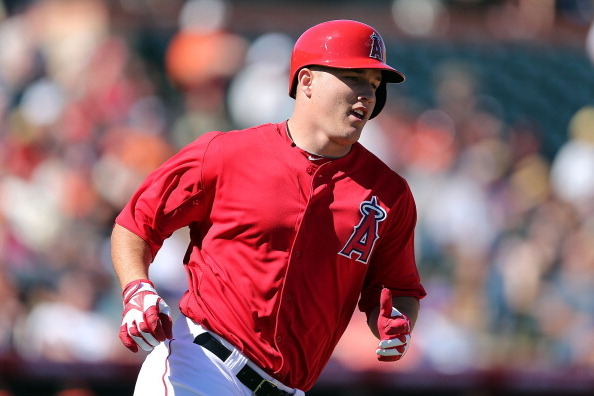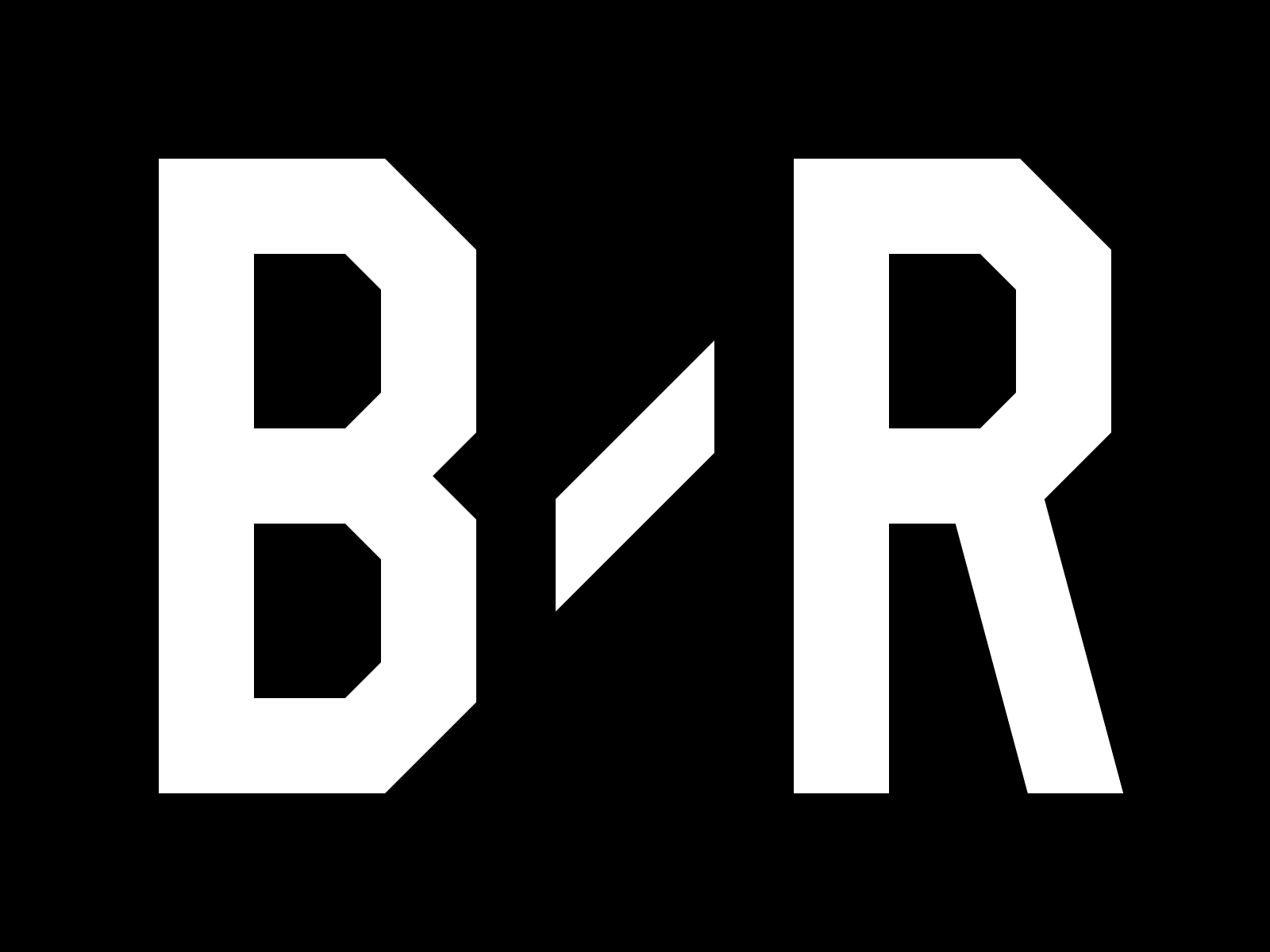As great as Major League Baseball's postseason is, this is the second year in a row that it won't be featuring the game's best player.
On the bright side, that means said player has some time to talk.
The guy I'm referring to is, of course, Los Angeles Angels outfielder Mike Trout. After hitting .326/.399/.564 with 30 homers and 49 stolen bases in a spectacular rookie season in 2012, Trout didn't skip a beat in his sophomore effort. He ended the year with a .323/.432/.557 batting line and 27 homers and 33 stolen bases.
Trout was making the media rounds on Thursday, and he was able to set aside a few minutes to talk to yours truly, all on behalf of Subway and its latest promotion.
I'll let Trout explain:
"For the featured $6 foot-long for October, they’re reintroducing the Tuscan Chicken Melt. It’s definitely one of my favorite sandwiches now. I’m normally a Sweet Onion Chicken Teriyaki guy, but I think this one is on top now."
Because I asked, Trout said he will be consuming a few of these as part of his offseason workout program.
And for the record, no, Trout isn't going to change his program this winter. He's going to stick with the same routine that resulted in him gaining 10-15 pounds and showing up to spring training looking like, as Mike DiGiovanna of the Los Angeles Times put it, an NFL fullback.

Beyond the physical maintenance, Trout said there's not much else to the work he puts in over the winter.
"No, not really," he said when asked if he makes any mental preparations over the winter. "It’s just routine, and it’s just staying positive. Getting all the negative out of your head."
Judging from how Trout's 2013 season went, however, it won't all be routine once the next season comes around. He'll have to make adjustments.
For example, consider fastballs.
According to Baseball Info Solutions data by way of FanGraphs, 64.7 percent of the pitches Trout saw in 2012 were fastballs (either four-seamers or two-seamers in this case). Only four players saw a higher percentage of heaters.
It was different for Trout in 2013. The percentage of fastballs he saw dropped to 60.5 percent, putting him outside the top 20 on the big board.
And yeah, Trout noticed that he wasn't being challenged quite as often.
"In fastball counts, I just wasn’t getting a lot of fastballs," he explained. "I was getting offspeed. They were just mixing it up pretty good, and it was about just making adjustments throughout the game."
Trout's powers of observation are quite keen. With data from Brooks Baseball, the following table shows the percentage of four-seamers and two-seamers Trout saw in key fastball counts in 2013 as compared to 2012.
Trout is right. He saw fewer fastballs in each of these four counts in 2013. Rather than going right after him, pitchers were being more careful when the count was in Trout's favor.
Since that's the sort of treatment middle-of-the-order guys with lots of power tend to get, was the general hesitancy to throw Trout fastballs somehow related to the fact that he hit second and third rather than leadoff in 2013?
"I don’t know about that," said Trout. But then he noted, "I think when Albert (Pujols) got hurt and was in and out of the lineup, that's when I think they were definitely starting to pitch to me differently."
Pujols, of course, was hurt for pretty much the entire season. But he played his last game on July 26, and that resulted in Trout's role being changed for the rest of the season.
After all, with Mike Scioscia's regular No. 3 hitter out of commission, somebody had to hit third. That proved to be Trout. Per Baseball-Reference.com, he started in the No. 3 hole in 51 of his last 57 games.
Trout's move to the No. 3 hole didn't result in a decrease in fastballs. Through July 26, he saw roughly 60 percent fastballs. After July 26, he saw...roughly 60 percent fastballs.
What changed, however, is where these pitches were located.
Brooks Baseball has fancy graphics that can show the frequency of where a batter has seen pitches in different areas in and around the strike zone. I created one for Trout that covers all of 2012 and all games through July 26, 2013 for four-seamers, two-seamers and cutters, for good measure (basically all hard pitches).
Since I can't re-post that image here, here's a table that focuses specifically on how often Trout saw fastballs on the inside edge of the plate and just off the inside edge.
Now we're going to go right into how things changed after July 26:
Everything looks more or less the same except for the rate at which Trout started seeing fastballs off the inside edge, both middle and down. Once he found himself regularly batting out of the No. 3 hole, pitchers started pounding him more around his knees with hard stuff.
What pitchers were probably trying to do was pitch to the scouting report. What it would have said is that that was the one area where Trout wasn't going to do damage against hard stuff.
Add an Isolated Power filter to Trout's zone profile against hard stuff from 2012 to July 26 this year, and it's easy to notice that he hit for a minimal amount of power against hard pitches off the inside edge of the plate down around his knees. But from July 27 through the end of the year, things changed.
Once Trout became a middle-of-the-order guy, pitchers became more aggressive about pounding the areas where his power seemed to be weakest. He responded, naturally, by hitting some of those pitches very hard.
So Trout clearly has an ability to adjust when adjustments are needed. Is this also to thank for his sudden ability to destroy curveballs in 2013? After all, he only posted a .023 ISO against curves in 2012 and boosted that number all the way up to .220 this year.
When asked, Trout just laughed.
"I don’t know," he said. "I just go up there and try to hit the ball right up the middle every time. If it’s a fastball and it goes out of the park, it’s a fastball. And if it’s a curveball and it goes, it’s a curveball. I don’t really look into that stuff."
Trout did, however, grant that simply accumulating experience in the big leagues "definitely" helps. Also, it admittedly helps to not miss hangers like this one:
Trout is 22 years old and now has two full seasons under his belt. There were doubts as to whether the second could be even remotely as good as the first, but he made it happen. Talent has a lot to do with that. But while he obviously made me read between the lines to find out, it turns out he was able to avoid a step back in 2013 because he was able to adapt.
And in 2014, Trout has it in mind for things to be par for the course.
"I’m just going to keep my same approach. Not try to do too much. Play my game. Play Angels baseball. Try to avoid that slow start we had this year and go on a string. I’m looking forward to a good year," he said.
As for that one seemingly elusive trophy...
As you might have noticed, Trout gets asked about the American League MVP award quite a lot. Recently, he conceded to Mike DiGiovanna that the MVP will probably go to Miguel Cabrera again. But on Thursday, he said on NBC Sports Network that he would vote for himself this year if he could.
All Trout would say to me is that winning the MVP "would definitely mean a lot."
He added: "It’s definitely my goal to be the best player in the league."
Well, at least he has that part taken care of.
Note: Stats courtesy of Baseball-Reference.com unless otherwise noted. Stats obtained firsthand.
If you want to talk baseball, hit me up on Twitter.



Read 0 Comments
Download the app for comments Get the B/R app to join the conversation